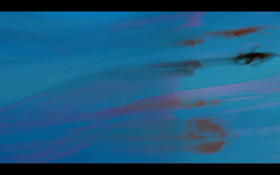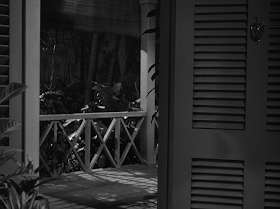The Walt Disney Animation Studio has certainly created some memorable characters over the years. From the iconic Mickey Mouse ("It all started with a mouse") to the recent creation of that icy Queen with magical powers, the limits of what can be achieved in the art form exist only within the imagination of its animators. So it may be surprising when I say that for me, one of the studio's best comes from a film that is far from universally loved. But, without a doubt, there is perhaps no better example of how the beauty of hand-drawn animation is able to mimic the look and movement of reality while still maintaining a stylized elegance than with Glen Keane's work on the character of Pocahontas. The character and the film she appears in are this week's choice for
Hit Me With Your Best Shot from Nathaniel at
The Film Experience. So, wingapo, let's take a look at Keane's under-appreciated artistic achievement.
Let me just clarify that it's the character of Pocahontas and not the film itself that I admire. Cause let's be honest, that movie's got some issues. While it was being made, the animators at Disney were divided into two teams, one working on
The Lion King and the other on this film. At the time, everyone wanted to be assigned to the
Pocahontas team because the project was viewed with more prestige. It was a chance to create a dramatic film that was in many ways more adult than anything the studio had done before. After considering an animated version of
Romeo and Juliet (I am soooo curious about how
that would have turned out. Would they have used Shakespeare's language? Would the lovers actually have died in the end?), the studio decided to tell the tale of the historic Native American and her encounter with the English explorer John Smith instead. Aging the character (the real-life Pocahontas would have only been about 11 or 13 when the English arrived in Virginia) and inventing a love story to fit their theme of the clash of cultures, there was definite potential in the material.
But where they faltered was in not embracing the adult elements more. I think Disney is afraid to change their formula and truly create a film that can be seen solely as an artistic endeavor. With millions to be made in merchandise and other promotional tie-ins, a film that does't appeal to all ages is too risky. But in trying to appeal to all, it dilutes the possibility of ever being taken seriously as art. (The studio later did it again when they scrapped plans to make an epic film about the Incas called
The Kingdom of the Sun and turned it into the childish–but I'll admit, pretty hilarious–
Emperor's New Groove.) Every time the antics of the animal sidekicks come into play in
Pocahontas, the film screeches to a halt and turns aways from what it wants so badly to be. (Although it could have been worse, the animals were originally supposed to talk and Pocahontas' main sidekick was to have been a turkey named
Redfeather voiced by John Candy.)
What saves the film from being a complete miss is the stunning artwork. The gorgeous backgrounds of pastel-hued forests, blazing sunsets, and cool, misty waterfalls create a bucolic atmosphere so lush that you do feel a hurt when the settlers begin to destroy it. I remember my aunt remarked after seeing the film that it was how she imagined heaven would look. But it's Supervising Animator Glen Keane (who was also responsible for Ariel, the Beast, Aladdin, and Tarzan among others) and his work on Pocahontas that remain the film's crowning achievement.
Let's start with the hair. Has any other element in a Disney film ever been so mesmerizing? Constantly in motion as if Pocahontas has one of Beyoncé's music video wind machines on her at all times, it whips about, it glides, it flows and practically becomes a character onto itself. Symbolizing her restless spirit, her blue-black mane entwines with the wind bringing her closer to nature and her mother (Powhatan says early on in the film that he feels her presence whenever the wind blows through the trees). And Keane's manipulation of it makes it seductively come alive. But it's his attention to detail, the way he effortlessly and elegantly treats it–the way she runs her hand through it when she goes to see Grandmother Willow, how she tucks it behind her ear while pondering Smith's outstretched hand, how she nervously begins to braid it while thinking about these strange new feelings inside her–that shows what a master of the form he is.
Since the earlier days of animation, the philosophy seemed to be the bigger and broader the better. But what Keane does with Pocahontas, trusting in the stillness and the power of a slight gesture, gives her a complexity and humanity rarely found in animation. The best scene of the film has to be when John Smith sees her for the first time at the waterfall as she silently looks at him. There's a power in her eyes, as if there are thoughts behind them. We're no longer looking at moving drawings, but being moved by the drawings.


The shot that I ultimately decided as my best embraces the fact that this is still an art form. Despite achieving a level of realness with the character what ultimately makes traditional hand-drawn animation what it is, is incorporating those elements that can't be achieved in any other medium. During her lesson to John Smith about embracing nature, Pocahontas asks John him if he can paint with all the colors of the wind and for a brief moment she turns into a impressionist painting composed of vivid streaks of color. Taking Keane's charcoal drawings and transforming them on screen, Pocahontas becomes the work of art that the film so desperately wanted to be. If only the film as a whole was worthy of such beauty.
























